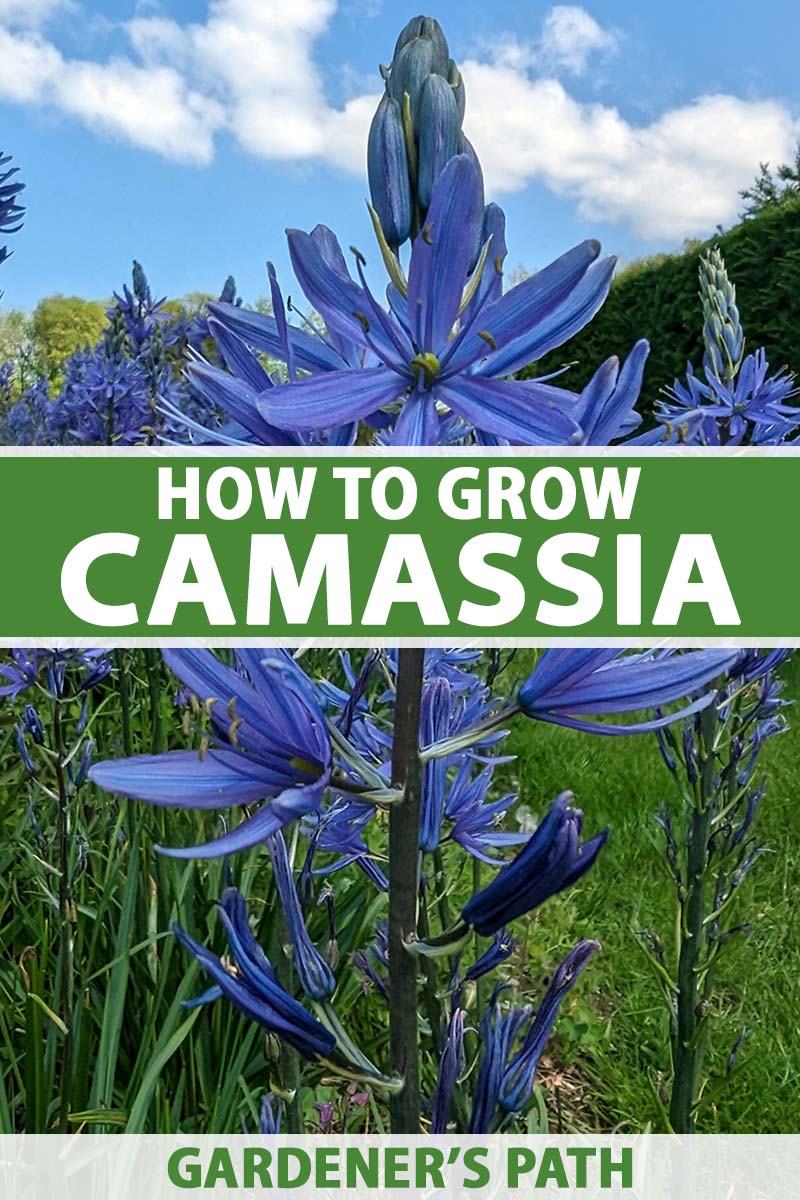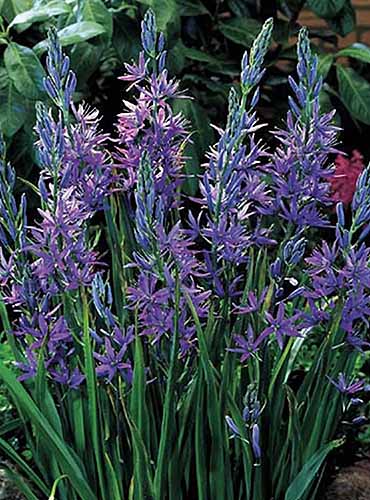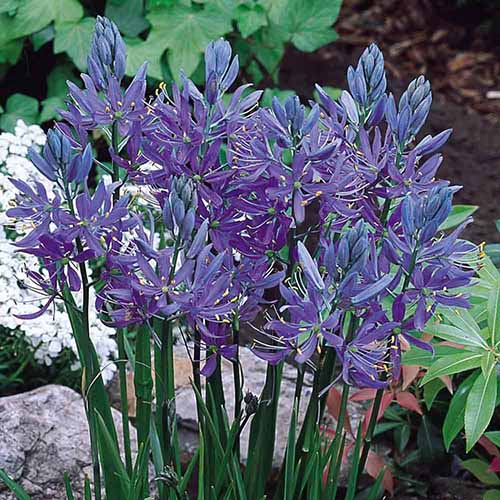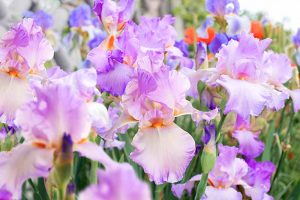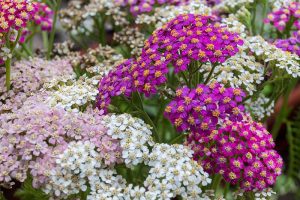Camassia spp.
The comeliest members of the asparagus family, Asparagaceae, camas aka wild hyacinths (Camassia spp.), look more like lilies than any vegetable I’ve ever known.
If you examine the leaves, the family resemblance becomes a little clearer. Arising from an underground bulb, the leaves are long, slender, and strap-shaped in appearance
Before they open, the flowers look a little bit like the spear of an asparagus.

We link to vendors to help you find relevant products. If you buy from one of our links, we may earn a commission.
The taxonomic debate over where to classify this beautiful bulb has been long and tiring. The genus was previously classified in the Liliaceae or lily family, and after DNA sequencing, it was reclassified as part of the Asparagaceae family.
There are six species in the Camassia genus, and they hail primarily from the western region of North America, all the way from northwestern Canada to southern California and Texas. One species, C. scilloides, is native to the eastern half of the United States.
These different species are often referred to by the same common names which include camas, camas lily, Indian hyacinth, quamash, and wild hyacinth.
Tolerant of clay soils, partial shade, and hardy in USDA Zones 3 to 8, these bulbs generally perform best in organically-rich, evenly moist soils.
The tall flower spike that makes them such a sought-after garden plant is lined with delicate, six-petalled blooms, each sporting long, yellow-tipped stamens.
Whether you’re searching for pink, white, or blue flowers, or even variegated foliage, there are a number of different cultivars to choose from!
Read on to find out more about growing this late-spring bloomer. Here’s what I’ll cover:
What You’ll Learn
Cultivation and History
There’s more to wild hyacinth than just a pretty face. This beautiful bulb has long been an important food staple of Indigenous American groups all across its native range.
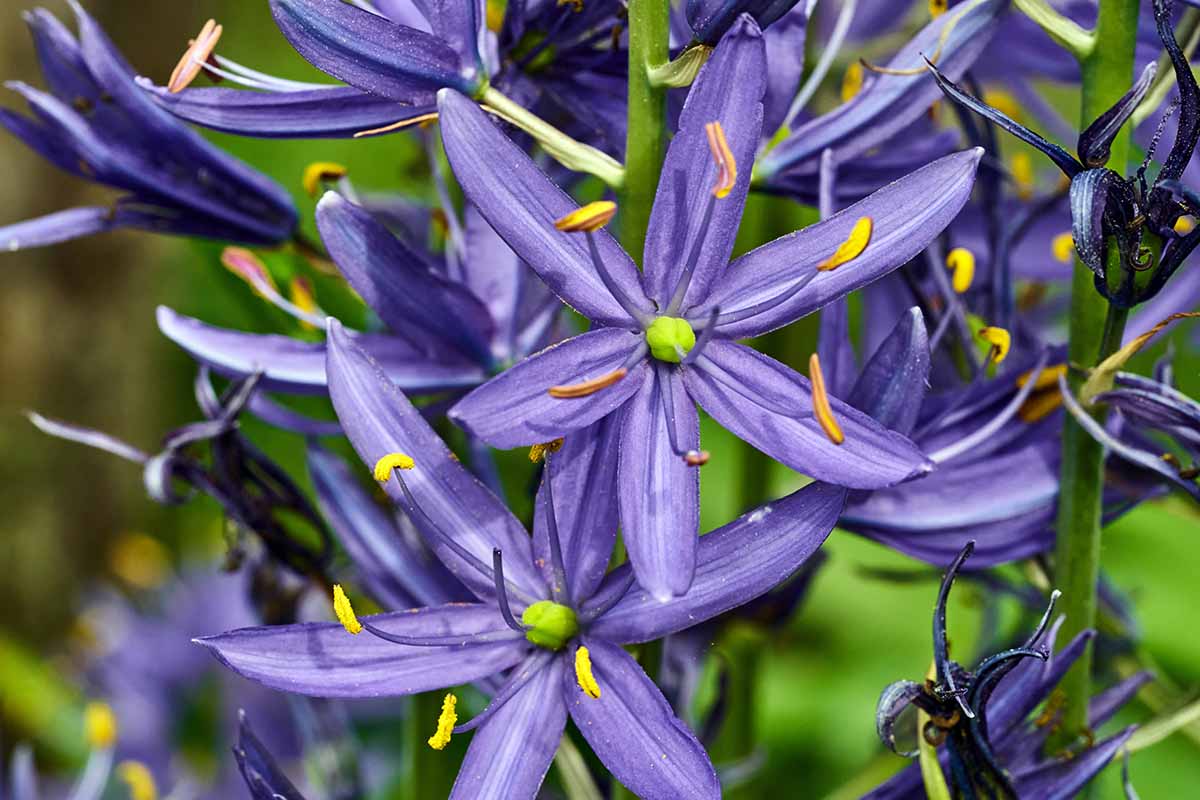
According to Lewis and Clark’s diary of their famous expedition, the Nez Perce of Idaho fed the adventuring duo a meal of bison and wild hyacinth roots.
The meal may not have gone over well with their inexperienced stomachs, but the bulbs of these plants, when cooked slowly, are an excellent source of sweet-tasting fructose.
The Nez Perce were known to traditionally give bags of the bulbs as gifts at large ceremonies, such as weddings or funerals, or in exchange for other goods.
Family groups would travel large distances to harvest these plants. In the growing season the soft, tender leaves were used to make mattresses.
Annual, controlled burning was performed to maintain the open, prairie-like habitat these bulbs need to thrive and spread.

The adaptable common camas, C. quamash, was introduced to Europe for cultivation in 1850. The most widespread of the Camassia species, common camas reaches heights of about 18 inches and is hardy in Zones 4 to 8.
In horticulture, most cultivars are derived from C. leichtlinii, otherwise known as large camas. This species reaches mature heights of about four feet and is hardy in Zones 5 to 9.
Eastern camas aka wild hyacinth, C. scilloides, is the only Camassia species with white flowers and it’s hardy in Zones 4 to 8.
Although they’re still not as popular as many common European spring bulbs such as the cheery daffodil, they are among the few native spring bloomers that enjoy moist soils. That’s an important niche to fill!
Nowadays, wild camas are threatened by the loss of habitat as a result of development, the alteration of wildfire regimes, and competition from invasive species.
The large, untouched meadows in which these bulbs thrive are rapidly disappearing. Planting native species in our own backyard can play a small but vital role in helping to conserve and maintain these plants on the landscape.
Camassia Propagation
The good news is that there are several ways to get Camassia started in your own backyard.

The even better news is that these beautiful bulbs spread via offsets and can self seed on their own, too.
From Seed
If you’re up for a challenge, camas can be grown from seed. Make sure you’re in it for the long haul, however, as growing bulbs via this method takes years. You may have to wait up to four years before you can feast your eyes on a flower.
You can collect seeds after the plants have finished flowering. If you choose to collect seed from a wild population, make sure you have permission to do so first.
When the seed capsules turn yellow or brown and are filled with firm, dark seeds, cut them off the plant and remove the seeds.
If you are collecting from the wild, take a maximum of 10 percent of available seed so that the wild creatures that depend on this food source won’t go hungry. It’s also important to leave enough seed behind so that natural dispersal can take place and new plants can grow.
Seeds from all Camassia species require a period of cold treatment, or stratification, to ensure germination. Periods of cold, wet weather help break down the hard coat surrounding the seed, enabling it to germinate.
Stratification can be done outside, if you live somewhere in the native range of these bulbs. If you live in colder or warmer regions, you’ll have to use the fridge instead.
Seeds purchased from plant nurseries or online will generally have been cold-stratified already, so check before you sow.
If you need to cold-stratify your seeds, place them in a moist paper towel in a plastic zip-top bag. Set them in the fridge for 90 days and keep the paper towel moist. Check periodically and discard any that develop mold.
When stratification is complete after 90 days, spread your seeds evenly across the surface of a seedling flat or gallon-sized pot filled with damp potting soil.
Lightly – and I mean lightly! – cover with moistened vermiculite or grit.
Germination requires spring-like temperatures, fluctuating between 50 to 70℉, and bright, indirect light. Don’t disturb your container or flat as the seedlings begin to emerge, and keep the soil moist, but not soaking wet.
Seedlings, which will look at first like teeny-tiny blades of grass, should be kept evenly moist with regular watering.
Once your seedlings reach a few inches high, which will take approximately a year, you can transplant them into a suitable, prepared location in the garden, or into larger, individual pots filled with moistened potting soil.
Dividing Offsets
Camassia species produce offsets, otherwise known as baby bulbs. In the wild, this is one of the primary ways these plants spread. If you or a friend have an existing clump of wild hyacinth, you can divide and transplant these offsets to another location.
Use a gardening fork to pry up a clump, taking care to not cut through or damage any bulbs. Brush the soil away from the bulbs, and gently peel off any new offsets.
Try to plant these offsets immediately so they don’t dry out.
Relocate them to places with the same basic conditions that allowed their parents to prosper: lots of water, sunlight, and rich, deep soil.
Transplanting Potted Plants
Bulbs are typically sold in large quantities, so if you want just a few camas lilies, see if you can find blooming, potted plants at a good quality nursery in the spring.
Bulbs generally do best planted during dormancy in the fall, but if you find potted specimens you can plant them out at any point during the growing season.
Site your new addition in an area of the garden with full sun to partial shade and rich, evenly moist soil.
Make sure to dig the hole just deep enough so that the plant sits at the same level as it was in its existing container. Gently remove the plant from the pot, set it in the hole and backfill with soil. Water in well.
From Bulbs
The best, easiest, and most popular way to get these stunning natives growing in your garden is to plant bulbs in the fall.
I like to plant all my bulbs after we have had a frost, so I know cold weather has truly arrived.
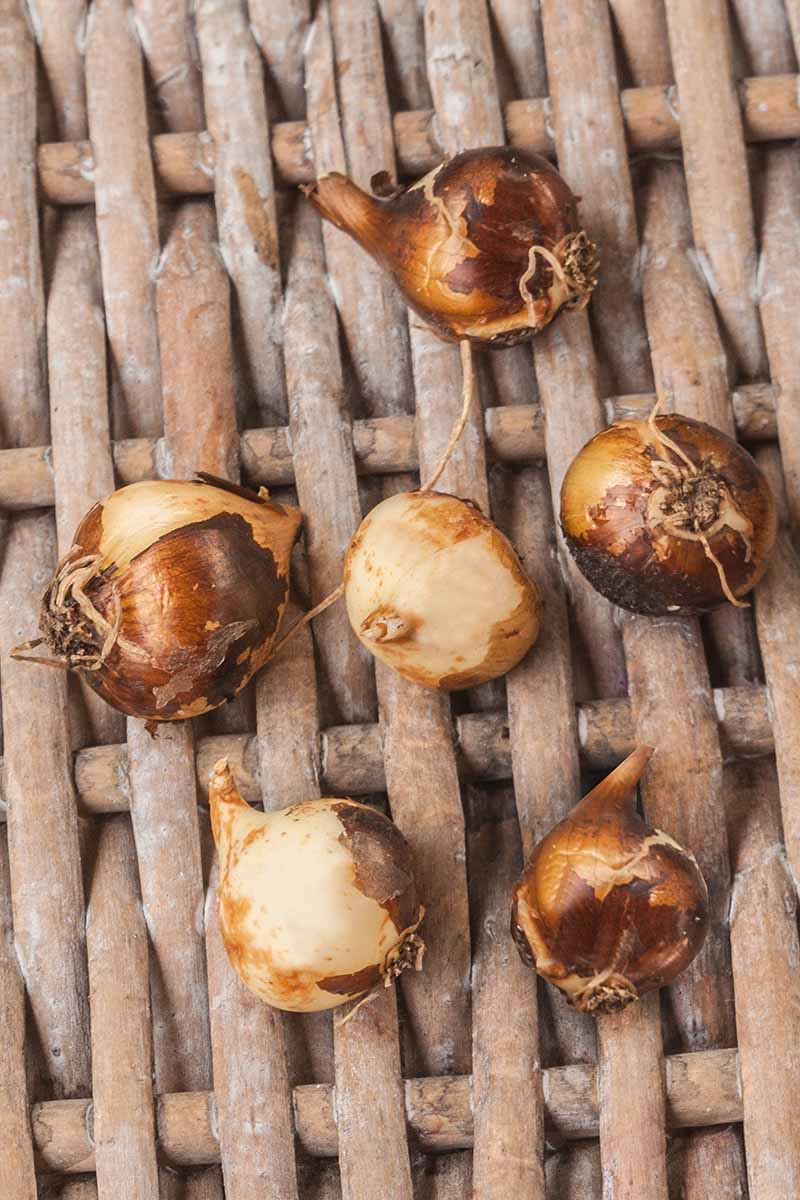
As a general rule of thumb, bulbs should be planted at twice the depth of their heights, with the pointy side facing up.
The different Camassia species have different sized bulbs, but most should be buried about five to six inches deep, and approximately the same length apart.
Plant your bulbs in moisture-retentive, deep, rich loam if you can.
As mentioned above, they can tolerate clay soils, or soils that are sandy and freely draining, but they won’t perform as well and will need regular watering.
How to Grow Camassia
Camas is a fairly low maintenance bulb so long as water supply is adequate in spring and summer, while the plant is actively growing.
Most species are cold hardy and can thrive in USDA Zones 4 to 8. Before planting, make sure you match the species you’ve chosen to your climatic zone.
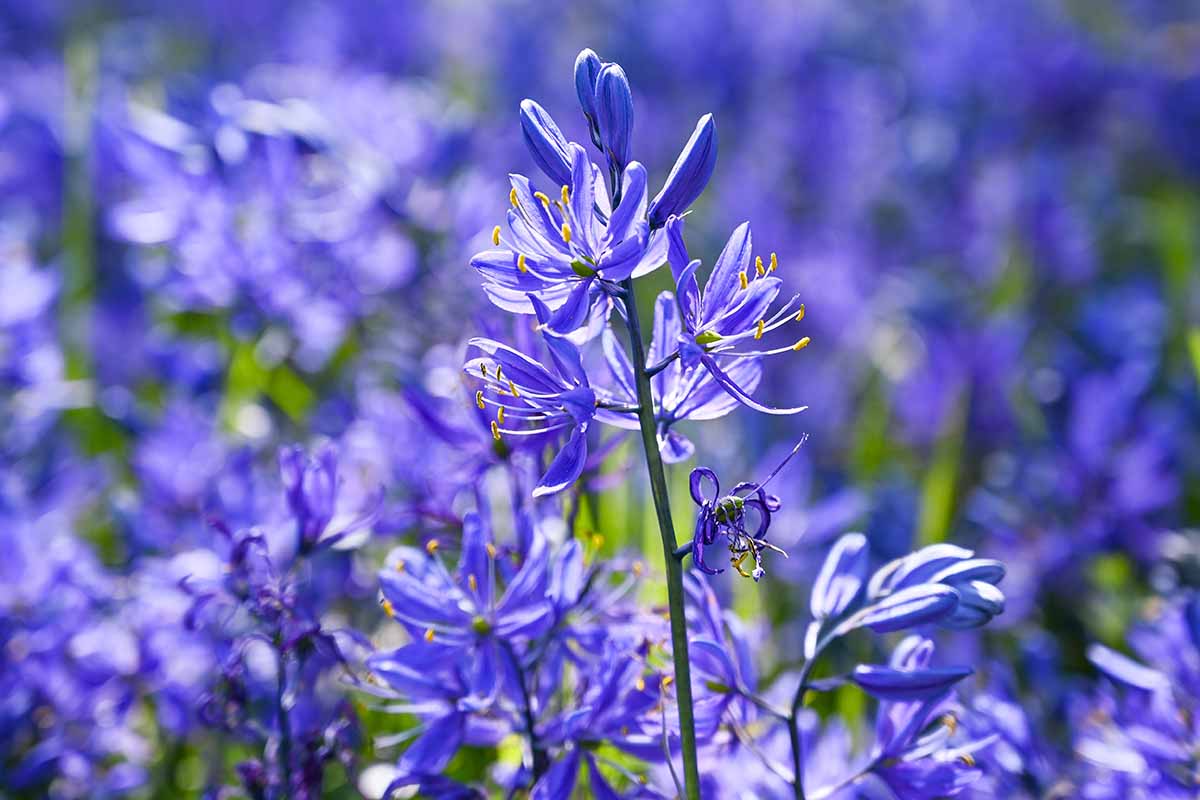
Grow your camas plants in organically-rich, slightly acidic soil with a pH of around 6.0 to 7.0. If possible, plant them in full sun but they will be fine in partial shade.
Although species in the Camassia genus can tolerate dry conditions for a little while, they will need regular watering in the spring and summer months in the absence of rain, particularly if they are growing in freely-draining soils. Aim to keep the soil evenly moist but not waterlogged.
The way I water my camas plants is to turn the hose on to just a trickle, and leave it at the base of the plants for a couple of hours.
If you’ve planted these bulbs en masse and watering by hand is difficult, make sure to situate them where moisture will remain consistent regardless of rainfall.
Once bulbs have gone dormant, usually towards the end of summer, the soil can be allowed to dry out a little.
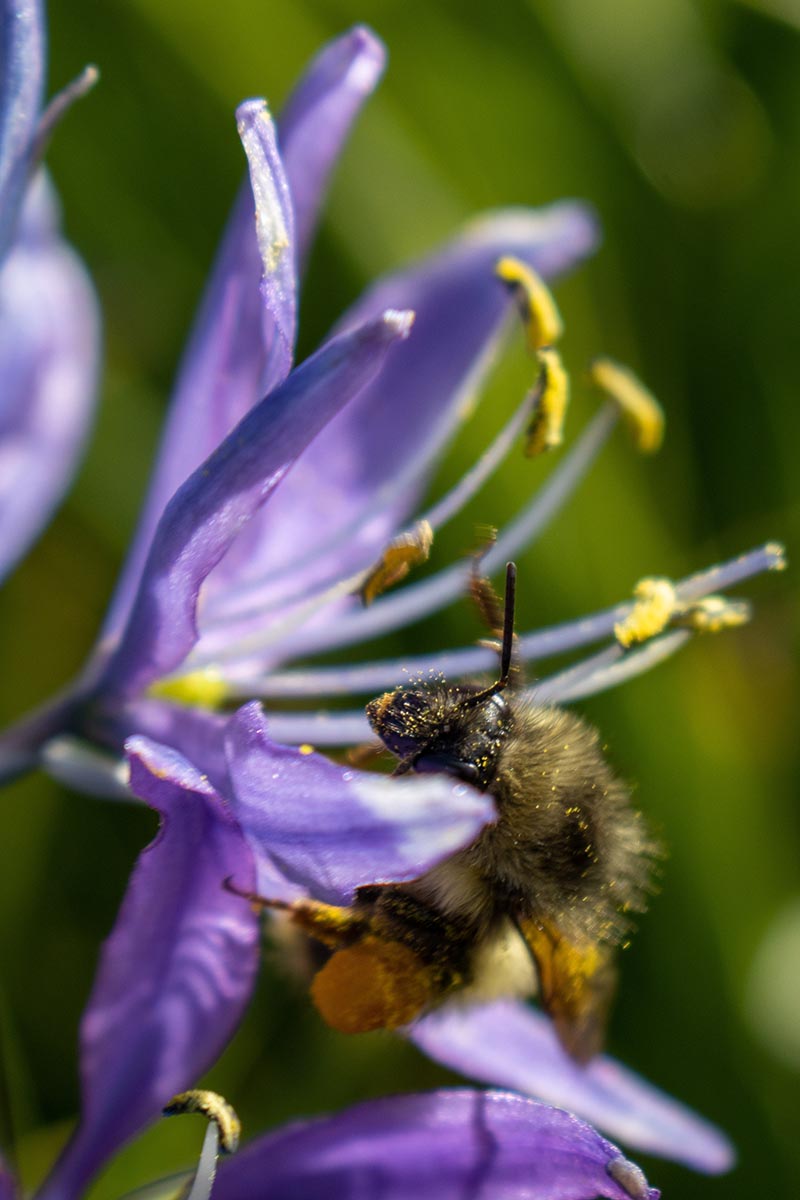
For these flowers, the richer the soil, the better. If your plants are growing in average to poor soils they won’t perform well and may eventually die.
A thick top dressing of compost in spring and fall will help boost the organic content of average soils. Add three inches to the soil and water it in well so nutrients trickle down to the roots.
Maybe you have a wet meadow just longing for some color? A low spot that retains a bit of moisture through spring and early summer? Or a border, with rich, deep soil? These areas are all perfect for Camassia.
Growing Tips
- Plant in rich, evenly moist soils.
- Site in a location with full sun, though plants will tolerate a little afternoon shade.
- Water well during any dry periods, especially during the growing season.
- Top dress site with compost in spring and fall if growing in lean soil.
Pruning and Maintenance
When grown in optimal conditions, Camassia plants are virtually maintenance-free.
Just don’t forget to water, water, water if there’s no rain in the forecast. The soil moisture level is particularly important in spring through summer, when the plant is actively growing.
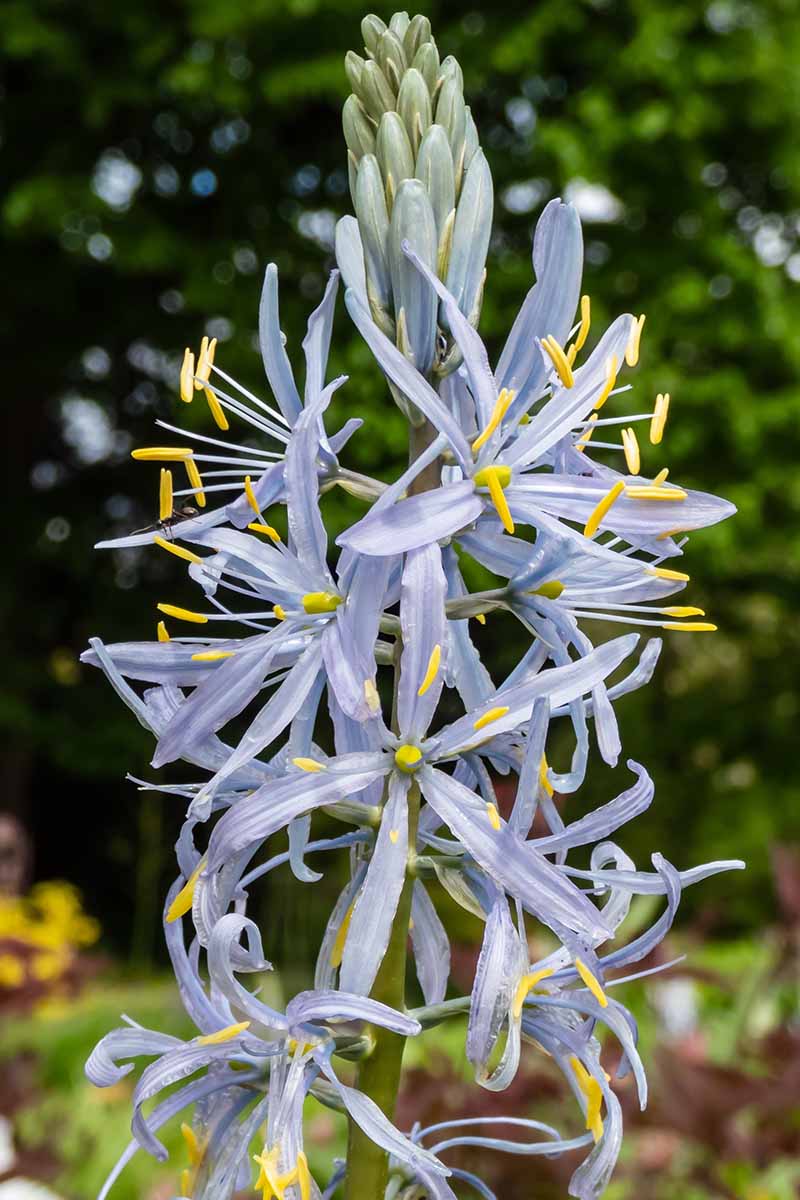
You can remove old leaves in late summer when they’ve turned yellow and are easy to pull off, but in naturalized areas just let them naturally degrade, providing organic material for the soil.
Don’t be tempted to trim off the foliage while it’s still green. Even though the flowers may be done blooming, the leaves are still performing the critical work of making food to store in their underground bulb for next year’s display.
Fall is the perfect time to divide mature clumps of bulbs, too. If dividing bulbs isn’t your thing, don’t do it! Camas will slowly spread with or without your help.
Camassia Cultivars to Select
One of the only native North American spring bulbs, Camassia species are still, strangely, not commonly found in landscaping.
However, there’s plenty of diversity in the genus and a number of interesting cultivars to choose from.
Blue Heaven
‘Blue Heaven’ is a C. leichtlinii cultivar that features pale, pastel blue flowers atop two- to three-foot flower stalks.
You can find ‘Blue Heaven’ bulbs available at Burpee.
Blue Melody
A C. quamash cultivar, ‘Blue Melody’ has dark blue flowers that contrast beautifully with the yellow stamens and bright green, slightly variegated leaves.
Plants top out at one to two feet tall.
You can find packages of 20 bulbs available from Caribbean Garden Seed via Walmart.
Pink Star
‘Pink Star’ is a C. leichtlinii cultivar with pale pink, almost salmon colored flowers. This cultivar tops out at about two and a half feet tall.
Sacajawea
‘Sacajawea’ is one of the most prolific white-flowering C. leichtlinii cultivars.
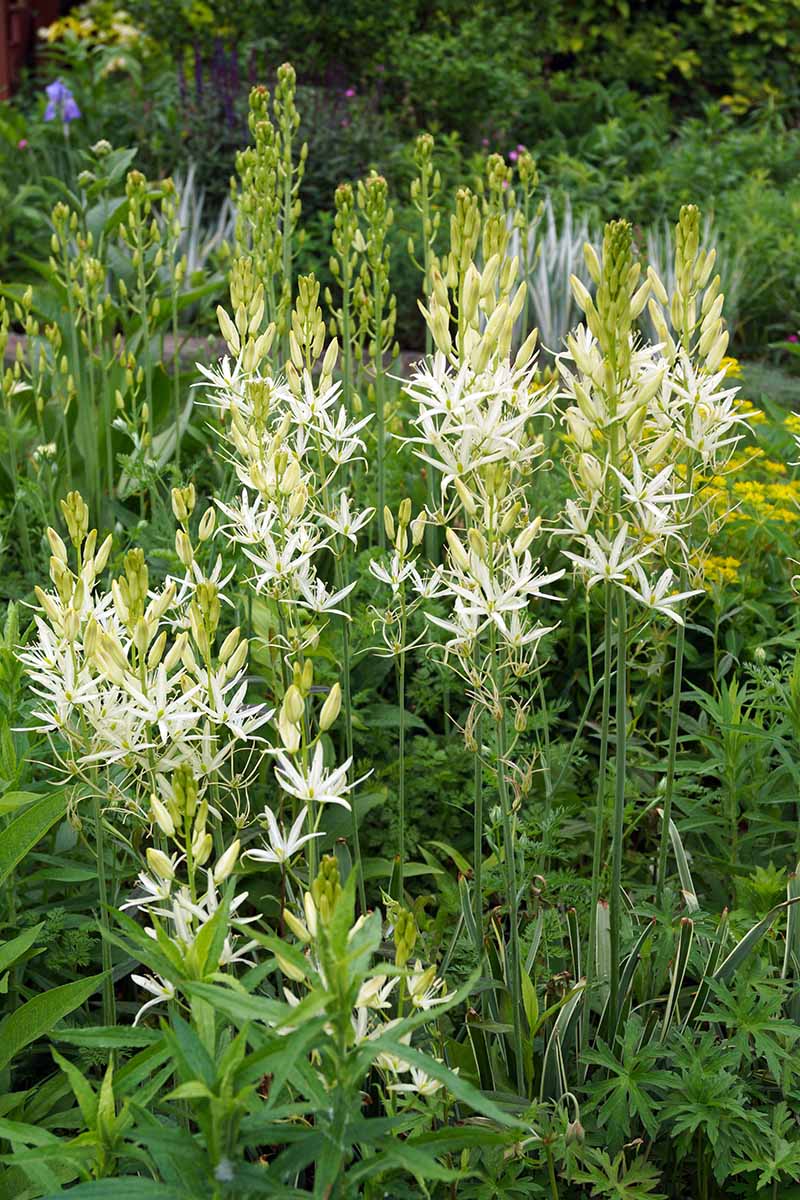
This cultivar grows to approximately three feet high. The flowers are off-white and the leaves variegated.
Managing Pests and Disease
Like many native plants, there’s not much that bothers camas in the pest or disease department.
What a welcome relief when so many popular bulbs, like the lilies, have quite the opposite experience!
Herbivores
While wild hyacinth is nobody’s favorite snack, moose, elk and deer do occasionally graze members of the Camassia genus, particularly in early spring.
Burrowing rodents such as gophers can dig bulbs up to eat but often end up replanting and spreading the bulbs inadvertently if they forget where they stored their underground cache.
Insects
Plenty of insects rely on wild hyacinth for pollen and nectar, particularly in spring when it’s one of the first flowers out in abundance, but few bugs, if any, do damage that need concern a gardener.
Not even slugs and snails that generally love the moist places these bulbs grow seem to cause any damage.
Disease
Miracle of miracles, Camassia is amazingly disease free, too!
Of course problems with these bulbs can and do arise but issues typically have to do with moisture – either a lack thereof or soils that are too waterlogged.
Waterlogged conditions can cause bulb rot and eventually kill the plant.
In general, issues with moisture can result in decreased blooming, smaller bulbs, and in severe drought or waterlogging, death of the plant. Remember, evenly moist conditions are the key to success.
Best Uses for Camassia
Without a doubt, wild hyacinth is at its best when allowed to fill vast swaths of green space. If you have the land, think about emulating how this plant grows in the wild, blue flowers mirroring blue sky.
White or pink cultivated varieties look wonderful when they are mass planted, too, but the blue flowering species such as C. quamash are the best naturalizers.
If you don’t have a spot where Camassia can freely naturalize, that’s ok too. The iridescent flowers look wonderful in a spring border, or even as a seasonal display in a pot.
Try the white or pink flowering wild hyacinths in broad swaths in a wide bed. The blossoms of all species and cultivars make great cut flowers, too.
Quick Reference Growing Guide
| Plant Type: | Perennial flowering bulb | Flower/Foliage Color: | Blue, white, pink/light green |
| Native to: | North America | Tolerance: | Clay soil, drought, deer, diseases |
| Hardiness (USDA Zone): | 4-9, depending on the species | Maintenance: | Low |
| Bloom Time: | Late spring to early summer | Soil Type: | Organically-rich, moist loam |
| Exposure: | Full sun to partial afternoon shade | Soil pH: | 6.0-7.0 |
| Time to Maturity: | 3-5 years | Soil Drainage: | Well-draining |
| Spacing: | 5-6 inches | Attracts: | Bees, beetles, birds, butterflies, hummingbirds, wasps |
| Planting Depth: | 4-6 inches deep (bulbs), surface of the soil (seeds), same depth as container (transplants) | Uses: | Garden bed, naturalized areas, wildlife garden, rain garden, cut flower. |
| Height: | 1-4 feet | Order: | Asparagales |
| Spread: | 6 inches | Family: | Asparagaceae |
| Water Needs: | Moderate-high (spring and summer), moderate-low (dormancy) | Genus: | Camassia |
| Common Pests and Diseases: | Slugs and snails; bulb rot | Species: | Angusta, cusickii, howelii, leichtlinii, quamash, scilloides |
Wonderful Wild Hyacinth
Perfect for moist spots where other bulbs can’t grow, wild hyacinth is a good choice for the eco-friendly, native plant gardener.
If you have the space, let them spread out and enjoy an abundant spring display.
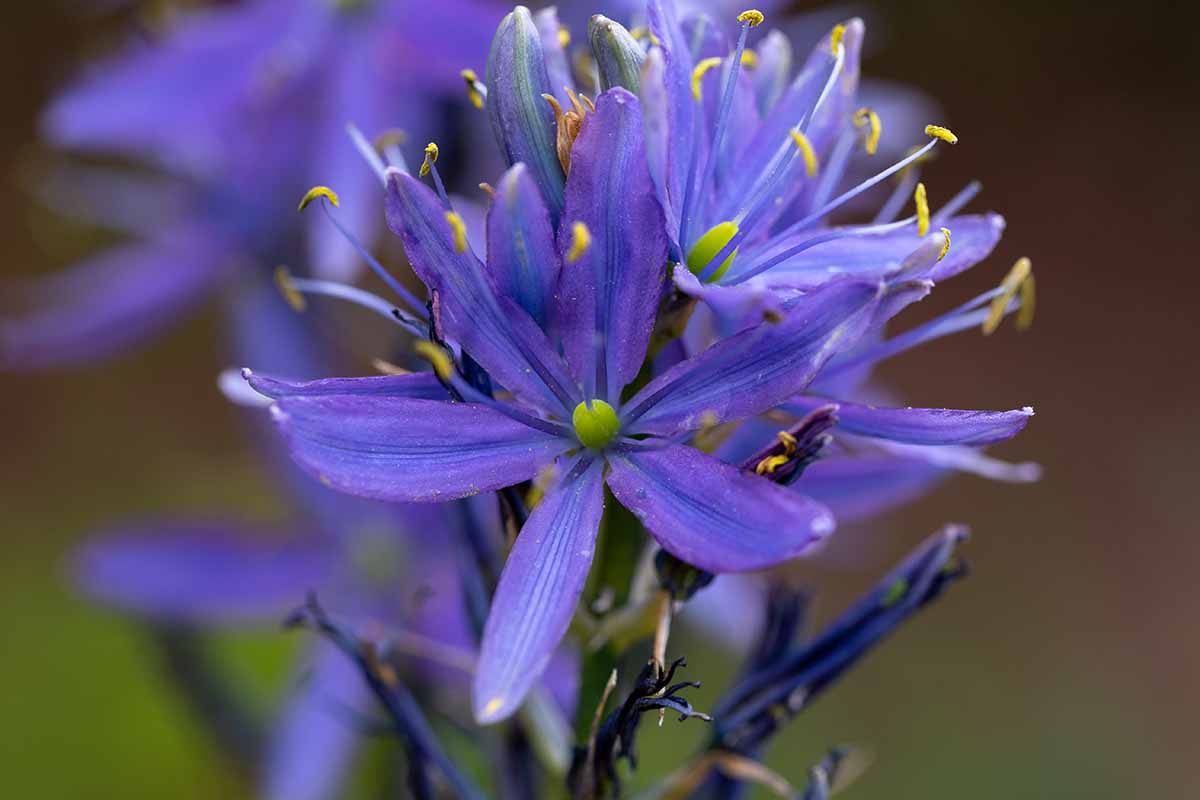
Have you ever grown wild hyacinth or seen it blooming in the wild? Which species do you love the most?
Tell us how how your plants at home are doing, where they’re growing, and what pollinators you’ve seen enjoying them. Have you ever eaten a Camassia bulb? Let us know in the comments section below!
And to learn more about other spring flowering bulbs, check out these guides next:
